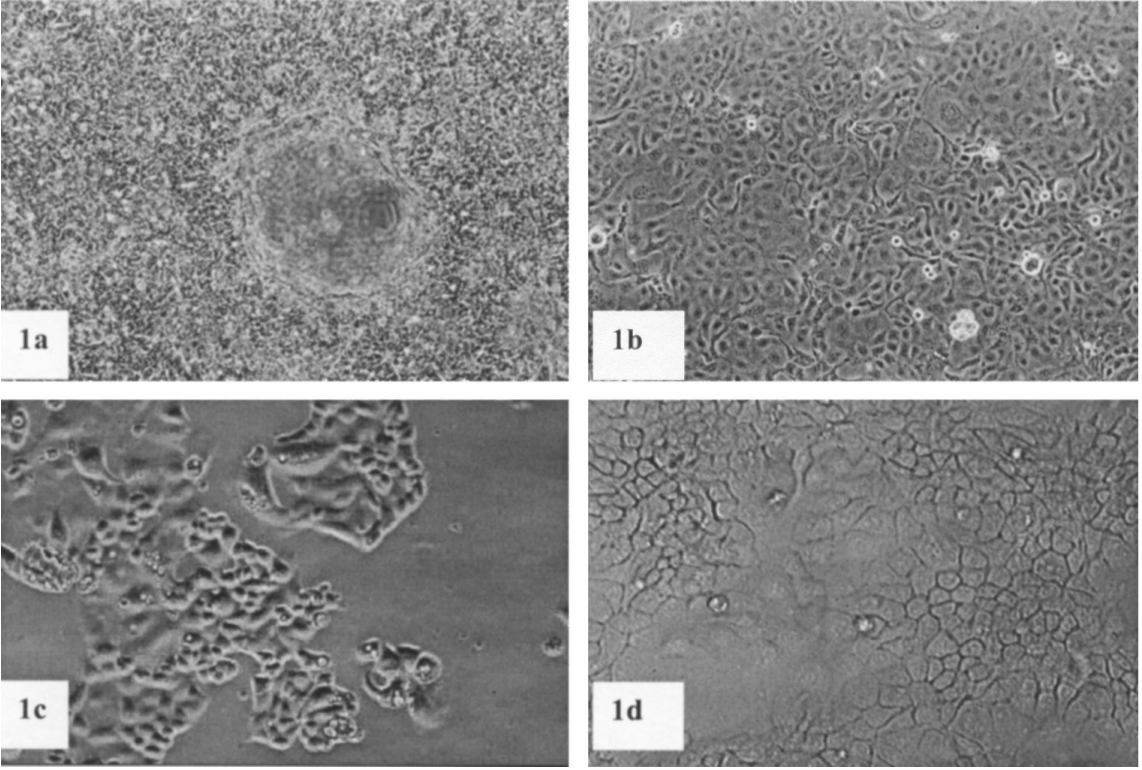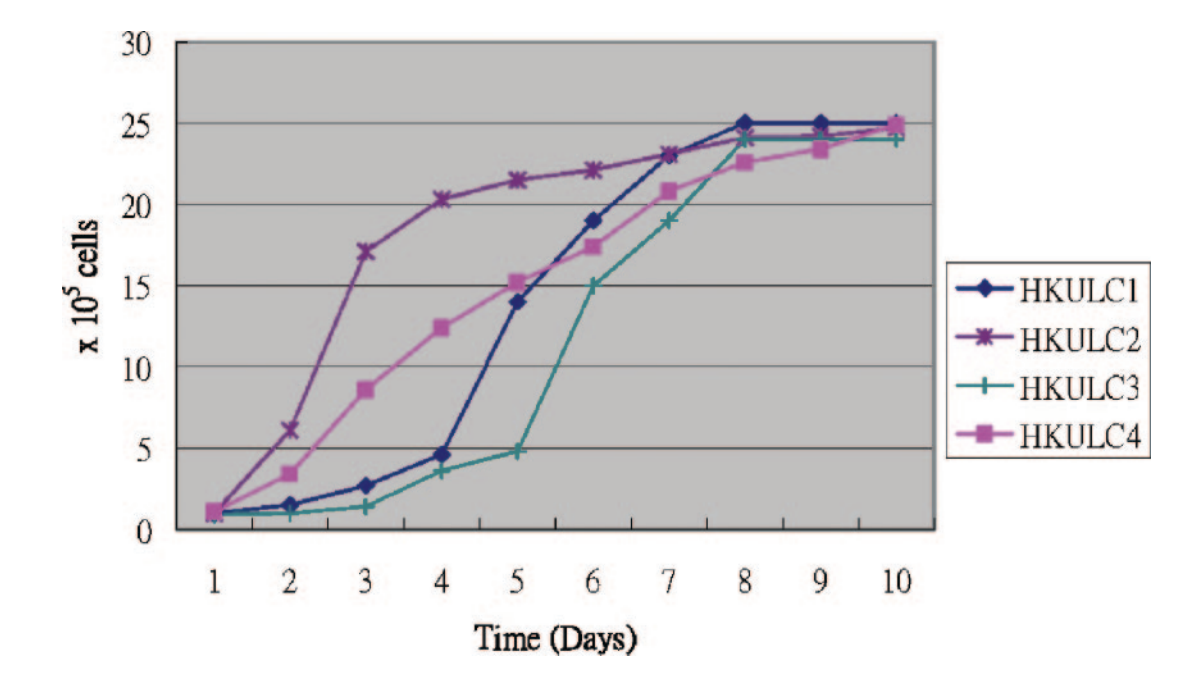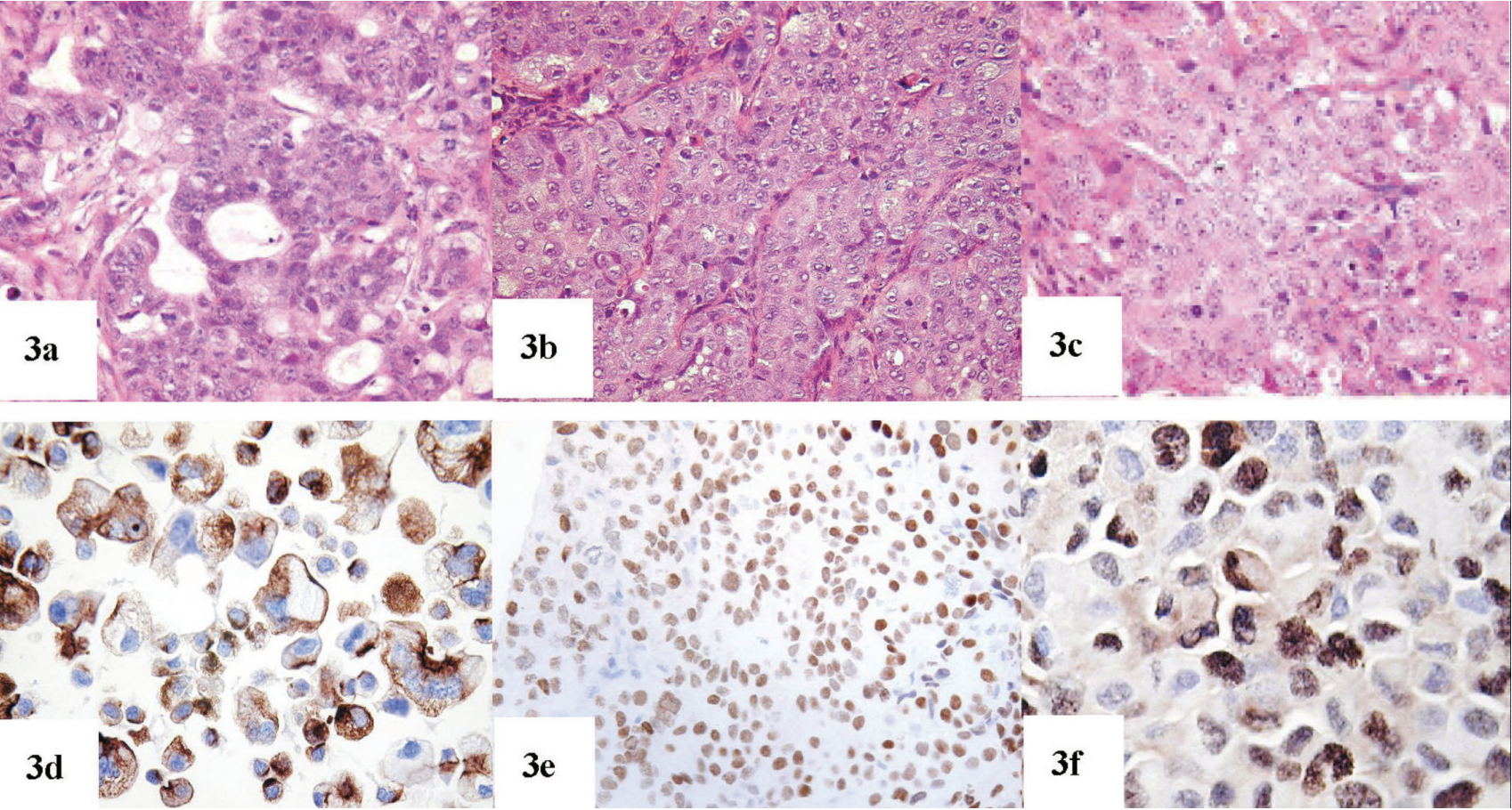
One sentence summary
The study establishes and characterizes four new lung adenocarcinoma cell lines from Chinese patients with different clinical characteristics, providing valuable resources for future lung cancer research and the investigation of molecular and therapeutic targets.
Background
Lung cancer, particularly adenocarcinoma, is a significant health risk worldwide, with a notable increase in cases among females and non-smokers in recent years. Despite advancements in understanding the disease, the development of effective treatments remains challenging.
The study focuses on the establishment and characterization of four new lung adenocarcinoma cell lines (HKULC 1-4) derived from Chinese patients with different clinical characteristics, including age, gender, smoking habits, tumor staging, and previous therapy. These cell lines provide valuable resources for future research, particularly in understanding the pathogenesis of lung cancer in non-smokers and females, and in the investigation of potential therapeutic targets.
One of the cell lines, HKULC 3, derived from a female non-smoking patient, was found to have a deletion at exon 19 of the EGFR gene, a mutation more common in lung adenocarcinomas in non-smoking women. This finding, along with the differential gene expression identified in the study, provides promising avenues for further research into the molecular pathways involved in lung cancer.
Method
- Cell Culture and Maintenance: The cell lines were maintained in specific growth medium, and their growth kinetics were studied to understand their proliferation rate and doubling time.
- Tumorigenicity in Nude Mice: The tumorigenic potential of the cell lines was tested by injecting the cells subcutaneously into nude mice and observing for the development of xenograft tumors.
- EGFR Gene Mutation Analysis: The cell lines were analyzed for mutations in the EGFR gene, which is commonly mutated in lung adenocarcinomas.
- Gene Expression Profiling: Gene expression profiling was performed using Affymetrix GeneChip technology. The gene expression data were then processed and analyzed to identify genes that distinguish the cancer cell lines from normal bronchial epithelial cells.
- In Situ Hybridization (ISH) for Detection of EGFR Overexpression: ISH was used to analyze EGFR gene copy number in the cell lines.



Discussion
- Significance of New Lung Adenocarcinoma Cell Lines: The establishment of four new lung adenocarcinoma cell lines from patients with different clinical characteristics provides valuable resources for future lung cancer research. These cell lines, particularly HKULC 3 derived from a female non-smoking patient, offer unique insights into the pathogenesis of lung cancer in non-smokers and females.
- Gene Expression Profiling and EGFR Mutation: The study uncovers significant differences in gene expression profiles between the HKULC cell lines and normal bronchial epithelial cells. The identification of an EGFR gene mutation in HKULC 3 and the differential gene expression provide promising avenues for further research into the molecular mechanisms of lung adenocarcinoma.
- Constraints and Future Studies: The study acknowledges the limitations of the current research, including the small number of cell lines established and the need for further validation of the identified genes. Future research should aim to expand the number of cell lines and further investigate the role of the identified genes in lung cancer.
- Potential Therapeutic Targets: The differential gene expression identified in the study, including genes previously reported to have tumor suppressor activity, provides potential therapeutic targets for lung cancer. Future work will aim to validate these targets and explore their potential for therapeutic intervention.
- Groundwork for Future Lung Cancer Research: The research provides a foundation for future lung cancer research, particularly in understanding the pathogenesis of lung cancer in non-smokers and females, and in the investigation of potential therapeutic targets. The established cell lines and their gene expression profiles will serve as valuable resources for these future studies.
Reading summary
What is the motivation?
The study was motivated by the need to establish and characterize new lung adenocarcinoma cell lines from Chinese patients with known clinical characteristics such as age, gender, smoking habits, and previous therapy. The researchers aimed to provide resources for future research on lung cancer and in vitro chemotherapeutic drug study, especially given the increasing proportion of lung cancer patients who are females and nonsmokers in Hong Kong.
What is the novelty & contribution?
The novelty of the study lies in the establishment and characterization of four new lung adenocarcinoma cell lines (HKULC 1-4) from Chinese patients with different clinical characteristics. The researchers performed morphologic, growth kinetics properties, and EGFR mutation status of the cell lines, and conducted expression microarray studies to document the gene expression profiles of these newly established HKULC cell lines. These cell lines and their gene expression profiles provide valuable resources for future studies of lung cancer biology and in vitro chemotherapeutic drug study.